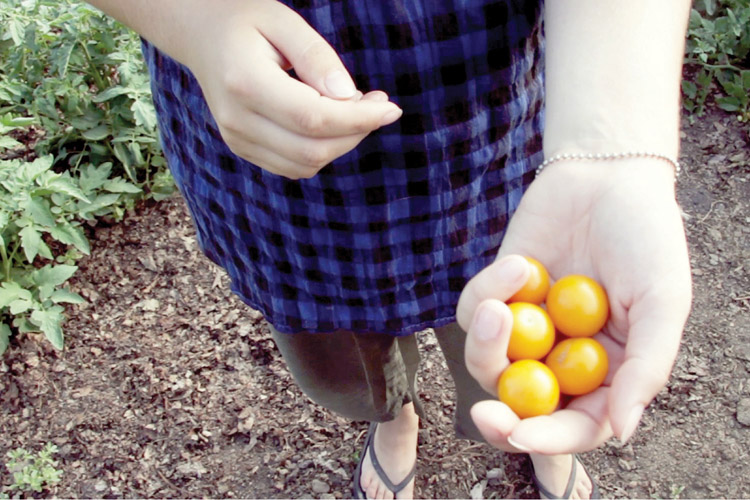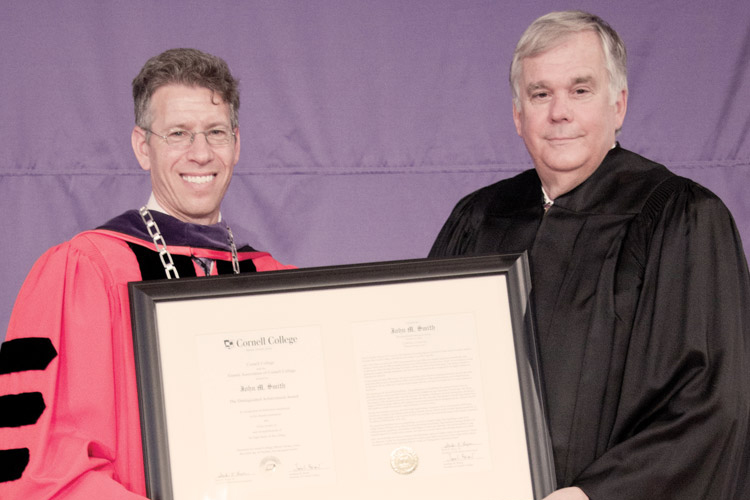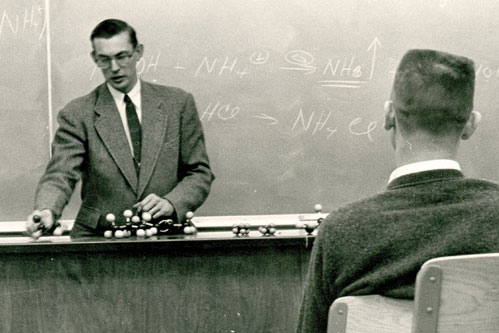50 years of Phi-Os
Fifty years in, Phi Omega is still living up to its original mission—to be a sorority that attracts women from all areas of campus.
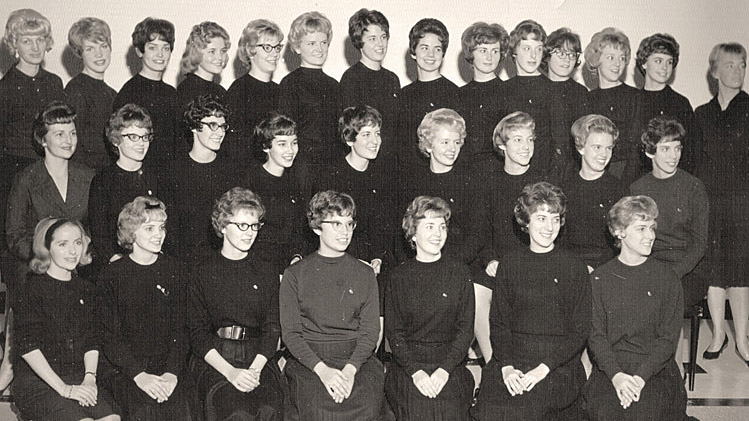
In 1962, a group of friends worried about being dispersed among different social groups. So Liz Shuman Burgess ’65 and Sue McKinney Schultz ’65 went to see the dean of women about how to start a new group. The dean explained the rules—there were a lot of them—and Phi Omega was born.
Schultz said the group participated in the typical social group activities each year: singing on campus, pledge parties for prospective new members, and a spring formal. They had dorm exchanges and inter-social group parties. They also started a service project and volunteered weekly with some of the children at the Ward School and with one special needs child in his home in Mount Vernon.
The group also had an enterprising side.
“In addition to our service project, we had a small project to earn some money for the group,” she said. “There was no breakfast served on Sunday morning, just a later brunch. The Phi-Os would purchase sweet rolls from the Mount Vernon bakery and sell them on campus.”
Gayle Jensen Van Auken ’65 of Prairie Village, Kan., another founder, said the idea of Phi Omega was successful right away.
“Eventually that original group included 30-plus members,” she said. “I think we hoped to create a less exclusive or clique-y kind of social group, which would not include, for example, mostly cheerleaders or mostly nerds.”
That spirit of inclusion has been a tradition of the Phi-Os ever since.
Carol Cook ’89 of Davenport, Iowa, remembered a group that drew in women in nearly every major or activity.
“I think we were a good cross-section of the campus,” she said.”We came from all over, had diverse backgrounds and embodied all kinds of interests from the arts to athletics. On the lighter side, we definitely did our best to put the ‘social’ in social groups—there wasn’t a Greek group (male or female) that we didn’t at least try to have a get-together with at least once, and we had an all-women groups event yearly. And while as a group we were close-knit, many of us had close friends that were outside the Phi-Os, either in another Greek group or outside the Greek system altogether.”
Phi-Os of all eras, from the founders to recent graduates, have maintained their bonds of sisterhood.
“When we left Cornell to start our adult lives, we promised each other that we’d keep in touch, and we did,” said Burgess. “For the past 30 years, eight of us have met off-and-on somewhere in the country to continue talking and laughing and eating together. And we have found that the older you get, the more important good friends really are. Now I feel that helping to form Phi Omega was one of my best life decisions.”
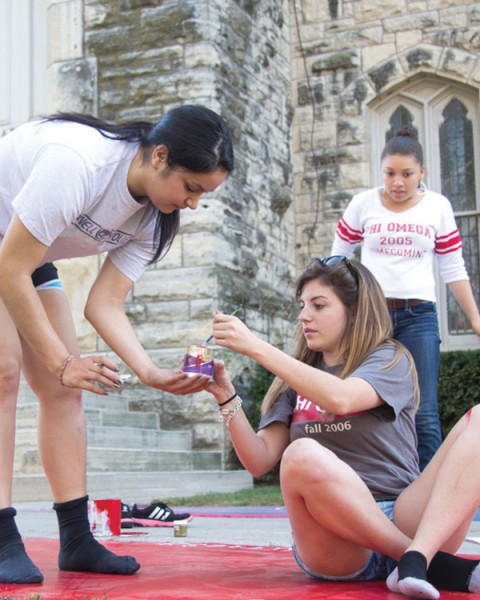
The impact of those founders in 50 years is significant, and today Phi Omega is the largest Greek group on campus, with 41 active members.
Rosie Mahoney, a senior from Nashville, said she was drawn to Phi Omega during her first year after meeting several members of the group. They had a variety of interests but shared infectious passion and dedication to Cornell.
“Phi Omega is a community where laughter and creativity are valued alongside athletic and academic rigor, where friends quickly become mentors, advocates, and sisters,” she said. “The group includes artists, athletes, intellectuals, leaders, and many others who are genuinely happy and proud to be a part of something that has brought so many of us together.”
The 50th anniversary celebration took place during Homecoming this year.


